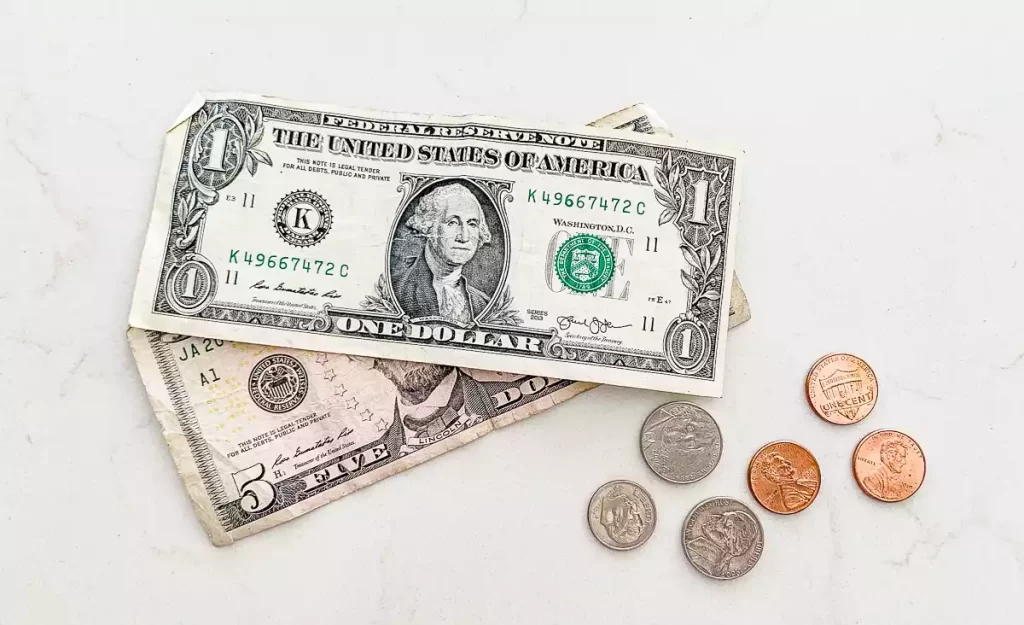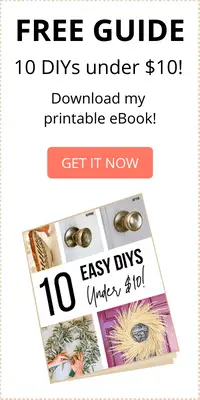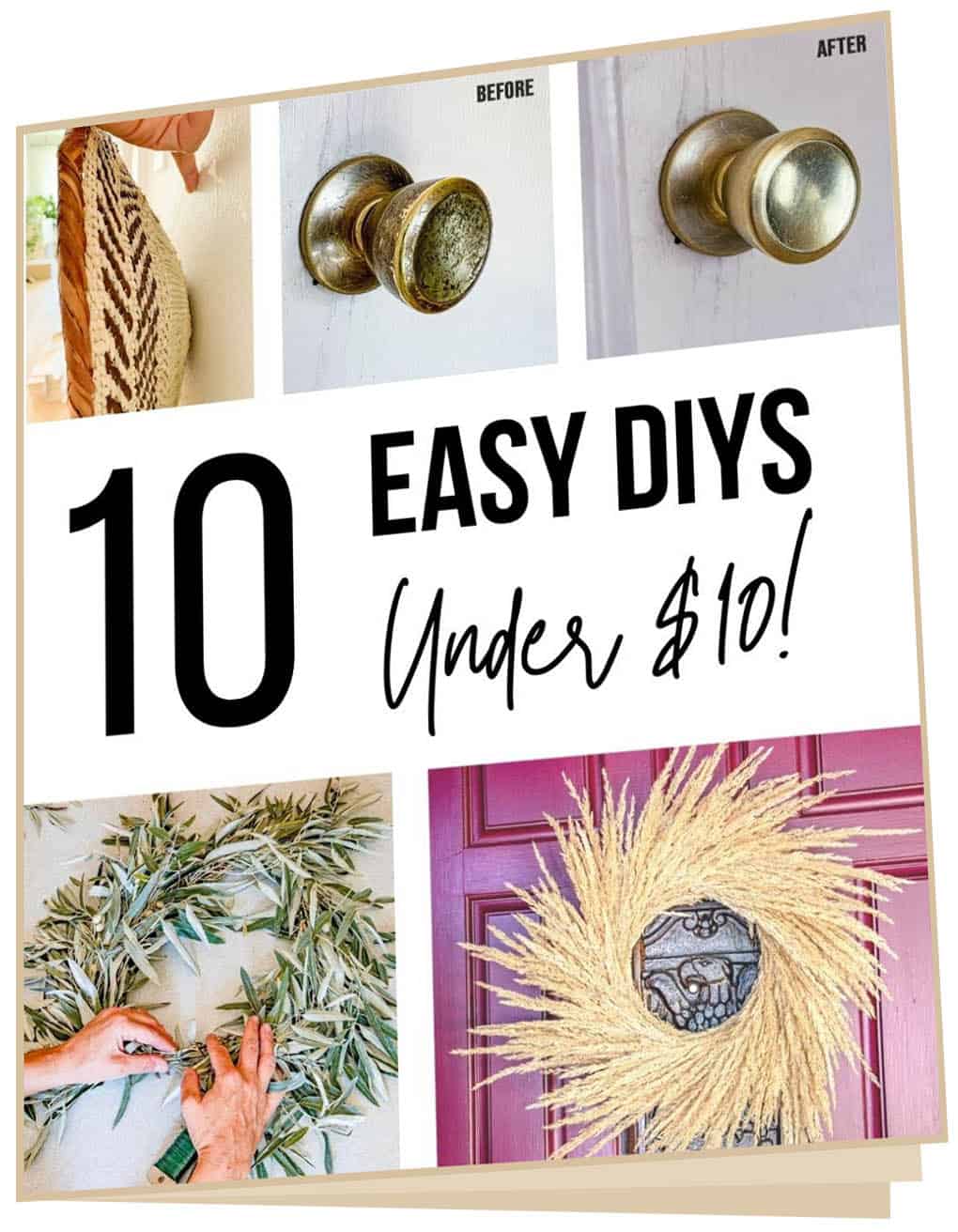Want to avoid Amazon seller scams and ensure you’re buying from a legit source? Today I’m sharing a slew of tips, some from Amazon itself, on how to verify that you’re buying a legitimate product from an authentic, trustworthy seller.
When we’re remodeling, a steady stream of Amazon packages arrives at our door. The internet makes it so much easier to get the exact items we want, especially when hardware stores carry a limited selection. Some of my go-to items are only available online and Amazon has become my DIY depot for faves like these:
- General Finishes Milk Paint (read more: The Easiest Way to Paint Cabinets)
- My favorite cabinet bar pulls (check out 2023 Trends in Cabinet Hardware)
- Affordable and stylish lighting (Amazon is highlighted in my 2023 Ceiling Light Trends)
So how do we vet the smaller third-party sellers? I very rarely get burned and have a lot of tips to share with you. Read on.
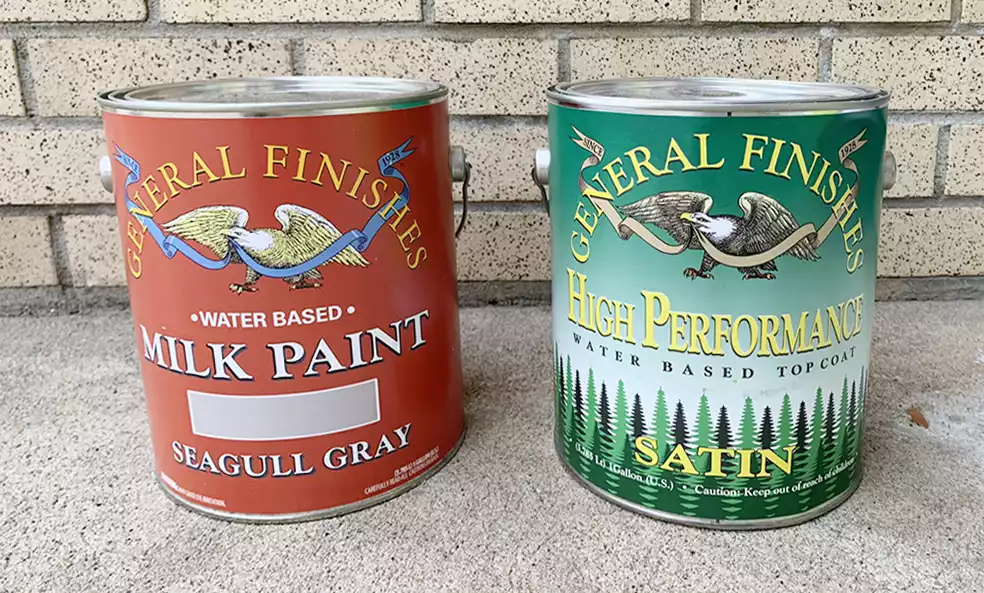
7 Ways to Avoid Amazon Seller Scams
- Who Can Sell on Amazon?
- How to Verify Legit Sellers (Tips #1-3)
- What Does Amazon Advise? (Tips #4-6)
- How to Avoid Payment Scams (#7)
- Options for Recourse if You’ve Been Scammed
Who Can Be an Amazon Seller?
Anyone. Sellers come from all corners of the world, and almost anyone can sell merch on Amazon, which is why this marketplace model will always carry some level of risk. Amazon does not vet sellers (my opinion), although they do address fraud claims and try to provide customer support. In my experience, customer service has been consistently great. Unfortunately, the responsibility to make good purchasing decisions is left up to the consumer.
How to Verify Legitimate Sellers
Because anyone can become an Amazon seller, it’s important to investigate the source before you make a purchase. Here are some of the first things to look for. I’m using a search for Schlage door knobs for these screenshot examples. Plenty of sellers offer this hardware, so here’s how I would choose where to source it.
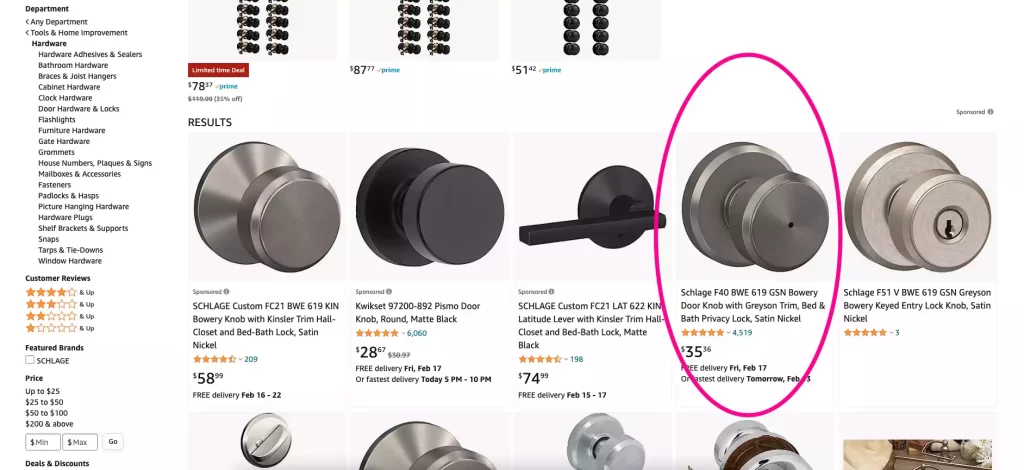
#1 – Buy From Amazon.com
Whenever possible, buy items sold by Amazon.com, rather than a third-party seller. Not only will you have better shipping options, you’ll receive better customer support if anything goes wrong. You won’t run into Amazon seller scams when you can buy directly from Amazon.
Look for the seller info here:

#2 – Reputable Third Party Sellers
Some third-party sellers are still major businesses. Here’s the knob I’m shopping for and it’s sold by Build.com through Amazon.
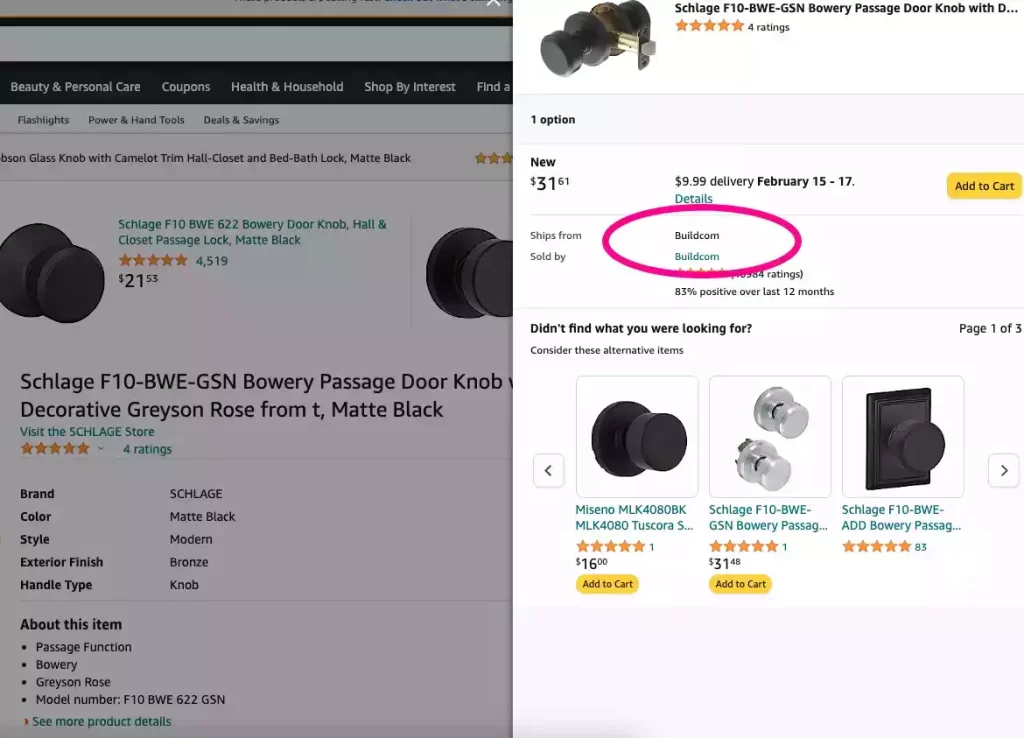
I clicked through on the seller link to check that it’s truly Build.com and it appears to be legit.

#3 – Check Seller Reviews
If you want to buy a less common item that Amazon does not stock in their vast warehouses, you may need to buy from a third-party seller. In that case, definitely read the seller reviews – not just the stars – and not the reviews for the product itself.
When you have seller options, choose the storefronts that sound real and have the most feedback to confirm that they are authentic.
For example, the best price appears to be for the knob sold by s3GreatDeals. Would I choose to buy this item from them? Probably not. For $6 more, I could purchase this knob from a seller with a home-related name and 500+ reviews. That feels more authentic, doesn’t it?

Digging deeper, I clicked through to check out the storefront for s3GreatDeals. The reviews are positive, but there are only three for this seller. Some of the reviewers’ names sound fake (Amazonfan?) and the comments are a little weird. Amazonfan’s comment sounds like a bad bot to me. I’m not sold on this vendor.
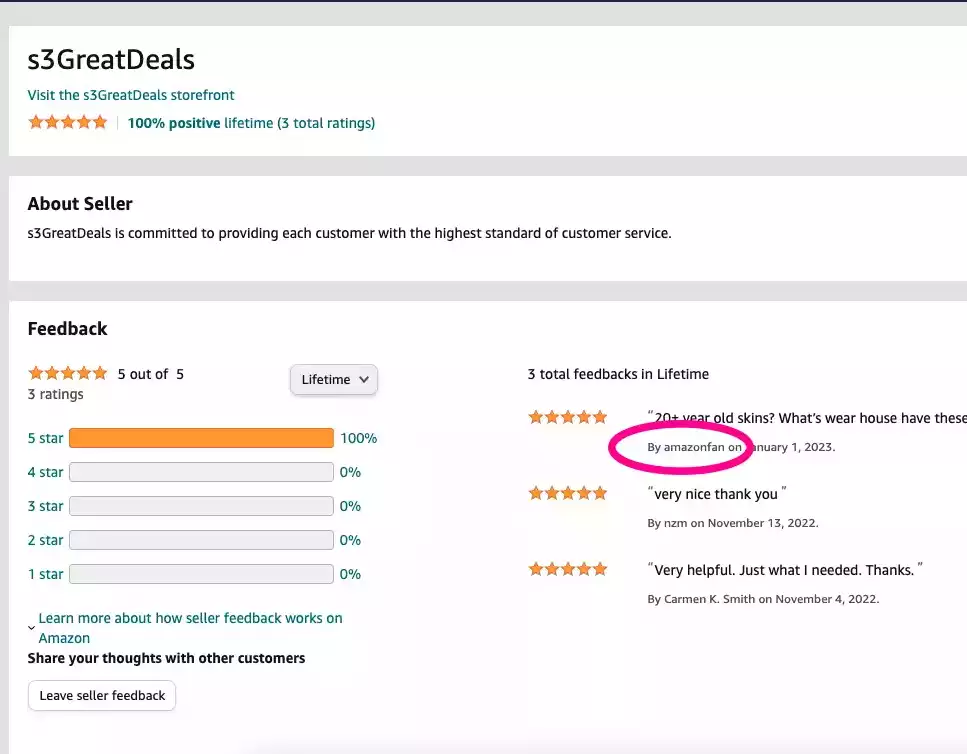
What Does Amazon Advise?
Last week, I heard interesting advice on a beauty podcast about vetting sellers. Apparently, the words of wisdom came directly from someone at Amazon, and you can hear it for yourself in this episode, starting at minute 12:00. Their Amazon source mentioned three red flags to look for.
Disclaimer: This advice is specific to beauty, which is affected by other factors (potential tampering, storage temperature, expiration dates…) but I think the tips can generally transfer to other categories.
#4 – Watch for Low Stock Counts
Avoid sellers listing “# left in stock.” To be perfectly honest, I’ve never had trouble with this when buying “low stock” items, but I’ll probably be more cautious in the future. Maybe it applies to beauty items more than home goods?
When to ignore: here’s a case where there’s a note about low stock, but I know the seller is legitimate (Build.com). If you can verify the seller, it’s probably safe to purchase.
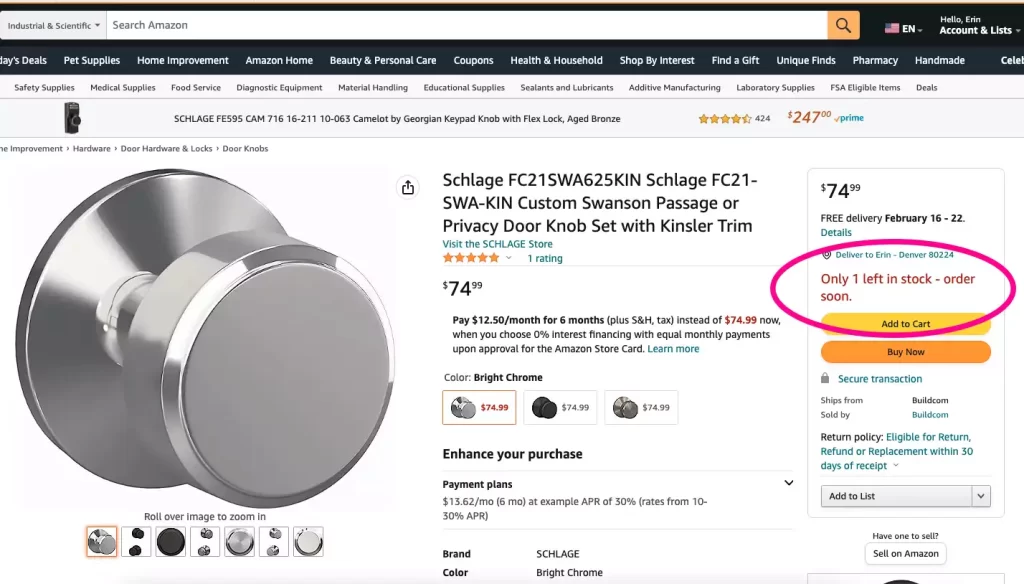
#5 – Count Stars and Reviews
Sellers should have a minimum of 3 stars and preferably 500+ reviews. Wow, that’s a tall order for some items!
When to ignore: if you know the item wouldn’t require special handling and you recognize the seller, it’s probably safe. For example, I wouldn’t buy sunscreen from an unfamiliar Amazon vendor, in case the formula was compromised while in storage. However, a doorknob isn’t going to give you hives if it was stored improperly at extreme temperatures.
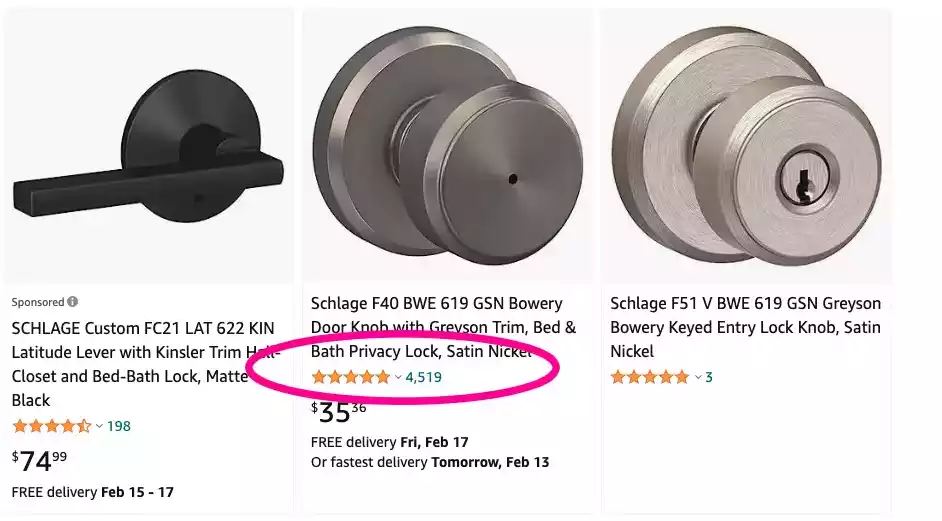
#6 – Choose Sellers That Offer Range
Products should be available in a variety of finishes, colors, etc. This means, if the item comes in other colors or other variations, the seller should offer the full range on Amazon. That’s a good way to vet the seller as legitimate.
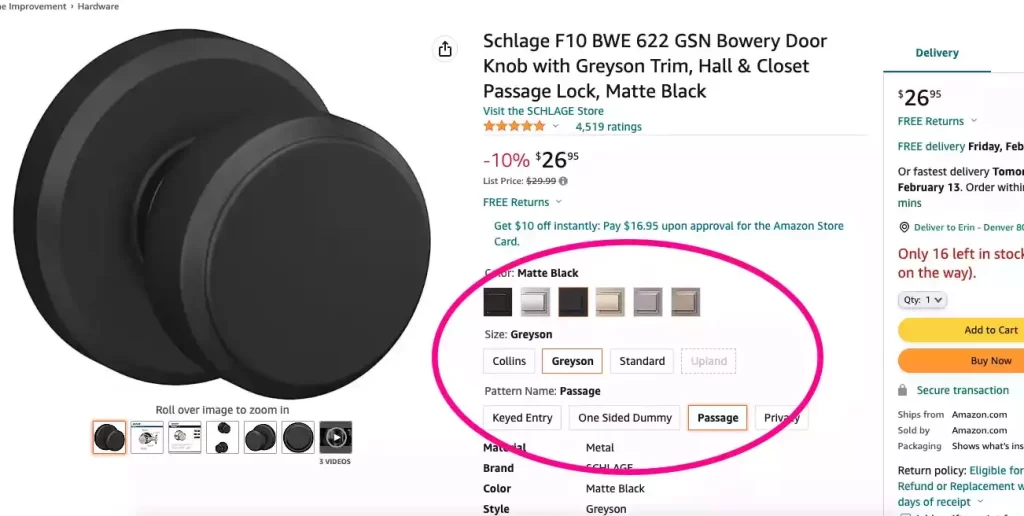
#7 – How to Avoid Payment Scams
As payment options expand online, ensuring you’re being as safe as possible can be tricky. Here’s what Amazon says about avoiding payment scams. The takeaways are:
- Never go off-site to pay a seller, meaning, always go through Amazon.com.
- Never send money to a third-party seller who claims Amazon will guarantee the transaction, even through Amazon Payments.
- Don’t respond to emails asking for personal account information. You’d be surprised how often people fall for scam emails that look legitimate.
Recourse if You’ve Been Scammed on Amazon
If you’ve fallen prey to an Amazon seller scam, then you surely know how frustrating the experience can be. Here are some options to recover your money.
A-to-z Guarantee
Amazon offers an A-to-z Guarantee for purchases made from a third-party seller on Amazon.com. This is a great option to explore first. (A-to-z with a lowercase z. Why isn’t the z capitalized?)
You can also recover up to $2500 under the A-to-z Guarantee for purchases made with Amazon Payments, which sounds similar to PayPal.
Report It
Help other shoppers by reporting the potential scam to Amazon. Here’s an article with options for reporting the Amazon seller scam you encountered.
Go Forth and Shop
…and avoid all Amazon seller scams! I hope you learned something new and helpful here. If you have any other tips, please share. Good luck and enjoy your DIY-filled weekend!
